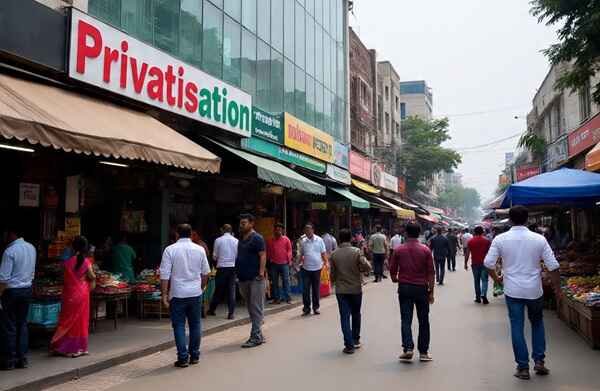When it comes to selecting the right type of cement for construction projects, one of the most common dilemmas is choosing between Ordinary Portland Cement (OPC) and Portland Pozzolana Cement (PPC). Both types of cement have their own distinct properties, advantages, and ideal use cases. The choice between them depends on factors such as strength, durability, setting time, cost, and environmental considerations.
This article will provide an in-depth comparison of OPC and PPC cement, helping you make an informed decision based on your specific project needs.
What is OPC Cement?
Ordinary Portland Cement (OPC) is a widely used cement type made from clinker (95%) and gypsum (5%). Clinker is produced by heating a mixture of limestone and other raw materials at high temperatures in a kiln, while gypsum is added to regulate the setting time.
Grades of OPC
OPC is available in three grades based on strength:
- OPC 33 Grade – Minimum compressive strength of 33 MPa after 28 days.
- OPC 43 Grade – Minimum compressive strength of 43 MPa after 28 days.
- OPC 53 Grade – Minimum compressive strength of 53 MPa after 28 days.
Advantages of OPC
✔ High Early Strength – OPC gains strength quickly, making it ideal for projects requiring fast construction.
✔ Shorter Setting Time – Suitable for structures where early formwork removal is necessary.
✔ Workability – It offers good workability and consistency, reducing the effort required in mixing and application.
Disadvantages of OPC
✖ Higher Heat of Hydration – Leads to cracks in mass concreting projects due to excessive heat release.
✖ Less Durable in Aggressive Environments – OPC is more vulnerable to chemical attacks compared to PPC.
✖ Environmental Concerns – OPC production generates a high amount of CO₂ emissions, making it less sustainable.
What is PPC Cement?
Portland Pozzolana Cement (PPC) is a blended cement that consists of fly ash (15-35%), clinker, and gypsum. Fly ash, a byproduct of coal-fired power plants, acts as a pozzolanic material, enhancing the cement’s durability and long-term strength.
Advantages of PPC
✔ Increased Durability – PPC provides better resistance to chemicals like sulfates and chlorides, making it ideal for marine and coastal structures.
✔ Low Heat of Hydration – Reduces the risk of thermal cracks, making it suitable for large concrete pours.
✔ Eco-Friendly – Since PPC uses industrial waste like fly ash, it significantly reduces CO₂ emissions, making it a sustainable choice.
✔ Improved Workability – PPC has a smoother texture and better bonding properties, reducing permeability and enhancing concrete performance.
Disadvantages of PPC
✖ Slower Strength Gain – Compared to OPC, PPC takes longer to achieve its full strength.
✖ Extended Setting Time – The initial setting time is longer, which may not be suitable for projects requiring quick turnaround.
✖ Limited Early Strength – PPC cannot match the early strength of OPC, making it less ideal for time-sensitive applications.
Comparative Analysis: OPC vs. PPC

Now that we understand the characteristics of both OPC and PPC, let’s compare them based on various parameters:
| Parameter | OPC Cement | PPC Cement |
|---|---|---|
| Composition | Clinker (95%), Gypsum (5%) | Clinker, Gypsum, Fly Ash (15-35%) |
| Setting Time | Faster | Slower |
| Early Strength | Higher | Lower |
| Final Strength | Lower compared to PPC in the long run | Higher over time |
| Heat of Hydration | High (causes cracks in mass concreting) | Low (prevents cracks) |
| Workability | Less compared to PPC | More due to finer particles |
| Durability | Lower in aggressive environments | Higher, better chemical resistance |
| Eco-Friendliness | Less eco-friendly | More eco-friendly due to fly ash usage |
| Cost | Generally higher | More affordable due to partial replacement with fly ash |
| Best for | High-rise buildings, bridges, flyovers | Dams, marine structures, residential buildings |
Which Cement is Better?
The decision to choose between OPC and PPC cement depends on the type of construction and project requirements.
Use OPC Cement When:
✔ High early strength is required, such as in precast structures, high-rise buildings, and bridges.
✔ Fast-track construction is needed, where formwork removal should be done quickly.
✔ Workability is a key factor, and there is less concern about long-term durability.
Use PPC Cement When:
✔ Durability is a priority, such as in marine structures, sewage treatment plants, and foundations exposed to moisture.
✔ Large-scale concrete pouring is required, reducing the risk of thermal cracks.
✔ A cost-effective and sustainable option is preferred, as PPC uses fly ash and emits less CO₂.
Final Verdict
Both OPC and PPC cement have their advantages and disadvantages. If time is a constraint and early strength is crucial, OPC is the better option. However, for long-term durability, cost-effectiveness, and sustainability, PPC stands out as the preferred choice.
For general construction, such as residential buildings, PPC is often the better choice due to its enhanced durability, environmental benefits, and cost savings. On the other hand, OPC is the go-to choice for high-performance structures that need immediate strength.
Ultimately, the best cement for your project depends on factors such as project timelines, environmental conditions, and cost considerations. Always consult with a structural engineer before making the final decision.
In conclusion, the debate between OPC vs. PPC cement boils down to project needs. While OPC ensures early strength and quick setting, PPC offers long-term durability, sustainability, and cost benefits. By understanding their differences, advantages, and best applications, you can select the right cement for your construction project and ensure a strong, durable structure.
If you have any queries regarding cement selection for your project, feel free to ask an expert. Happy building!
I’m Hina Khan, working as a writer at Worldblaze.in blog. I love dancing and listening punjabi music. Here I’m sharing all the interesting stuffs that will definitely entertain you.





